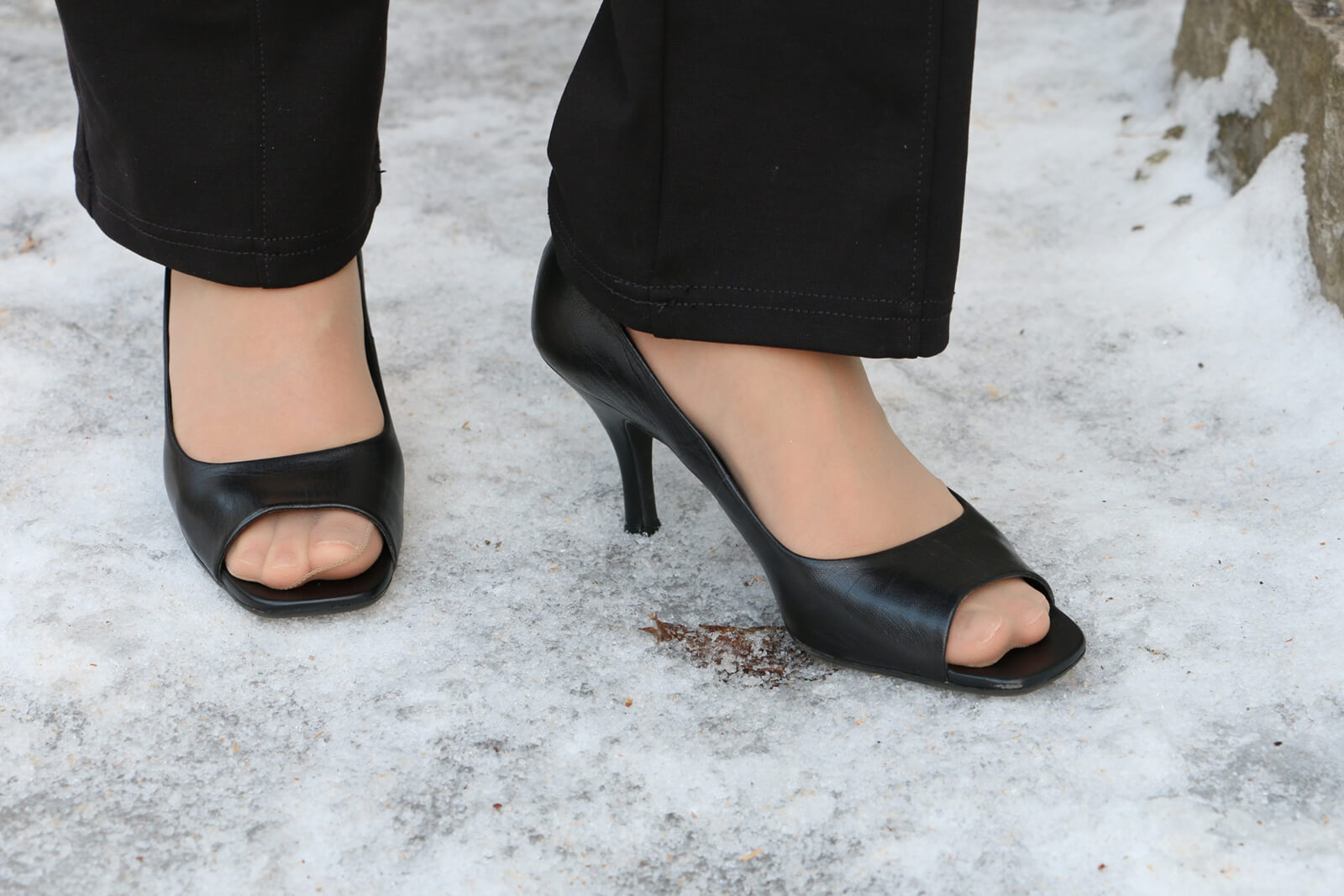February 9, 2022

High heels may look nice, but they aren’t particularly practical in winter. So why not use the most practical product when it comes to winter maintenance?
Making the right choices in winter
 Death and taxes are often cited as the two things you can definitely count on. I’d add winter in Ontario to that list, and I don’t expect that to change even with the impact of climate change.
Death and taxes are often cited as the two things you can definitely count on. I’d add winter in Ontario to that list, and I don’t expect that to change even with the impact of climate change.Since we know snow and ice is bound to arrive each and every winter, it’s only prudent to prepare. That way, we can make the most out of the winter months while staying safe. I suspect a parent would get some funny looks if they sent their child to school in shorts, sneakers, and no coat when the wind is blowing and the snow is flying. Parents want the best for their kids, so they make significant investments in the right boots, jackets, hats and gloves. Indeed, these investments are often made not simply because boots and clothes get outgrown, but because there seems to be a direct correlation between the need/usefulness of the item and the probability that it will be lost.
As with our kids, adults should also be encouraged to make good choices surrounding what we wear in snow. High heels may look nice, but they aren’t particularly practical in winter. Consider bringing so-called indoor shoes with you to change into, but wear boots and a winter jacket outside. Likewise, if you drive, consider the investment in winter tires. In many jurisdictions it is now unlawful to drive in winter without changing over to winter tires and in others there are reductions in insurance premiums if winter tires are used.
We can also make better choices at home when it comes to winter maintenance. Those lucky enough to own a snowblower should service their machines ahead of the winter season. Around your home, fix leaking downspouts and depressions to ensure water won’t pool and freeze.
When the inevitable white stuff starts to fly, take your time when shoveling to avoid overexerting yourself. Perhaps get those same kids who lose so many hats and gloves to help; after all,many hands make light work. Mechanically remove snow and ice and think about the real need for salt. Often what remains after shoveling will melt in the sun without it.
Environment Canada has deemed salt a “hazardous substance,” but it has special dispensation due to its use in winter maintenance. Safety first, but each of us should consider using the right product(s), at the right time, in the right amounts. Salt (NaCl), the same product that we use on French fries, is really only effective to -7 C. This is where other products, including beet juice, can assist. Such products help to lower the exothermic temperature, meaning the effective temperatures at which salt (NaCl) will work. But with any product like beet juice, you still need salt. Other products such as Calcium Chloride (Cac2) and Magnesium Chloride (mgCl2) have lower working temperatures, but have twice the chloride. While it is often true that these products cost a little more, their increased efficiency means users typically apply less to get the same results.
Grits such as sand can also be a good alternative, but they are only effective on top of ice. Often sand gets applied, then we have another winter snow event, and the grit gets buried and is therefore largely useless. Like salt, grits are also an environmental threat. They may not have chlorides that negatively impact the environment, but they do get washed into water bodies and impact habitats.
The point is to be prepared for winter and understand how each of us can do our own part to ensure safety and protect the environment.
Those wishing to learn more about the unique programs and services offered by the Smart About Salt Council and how they support professionals in the winter maintenance industry, including contractors and facility owners/operators, are encouraged to visit smartaboutsalt.com.